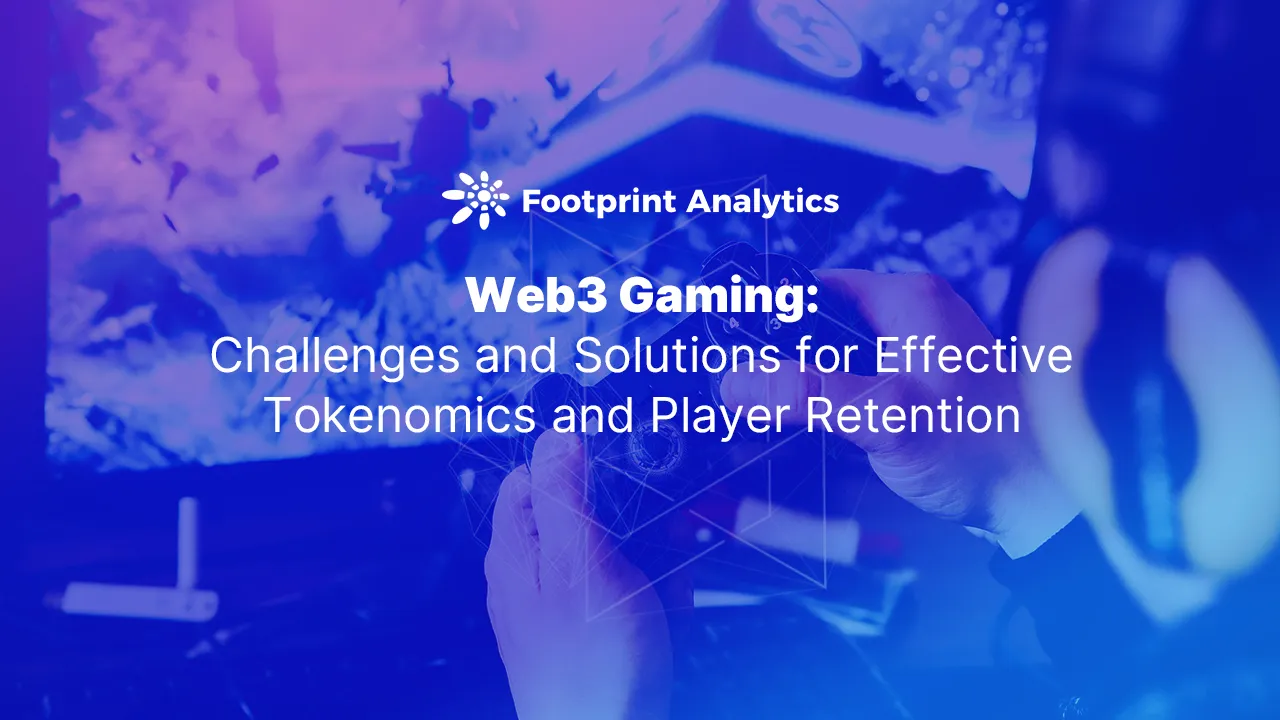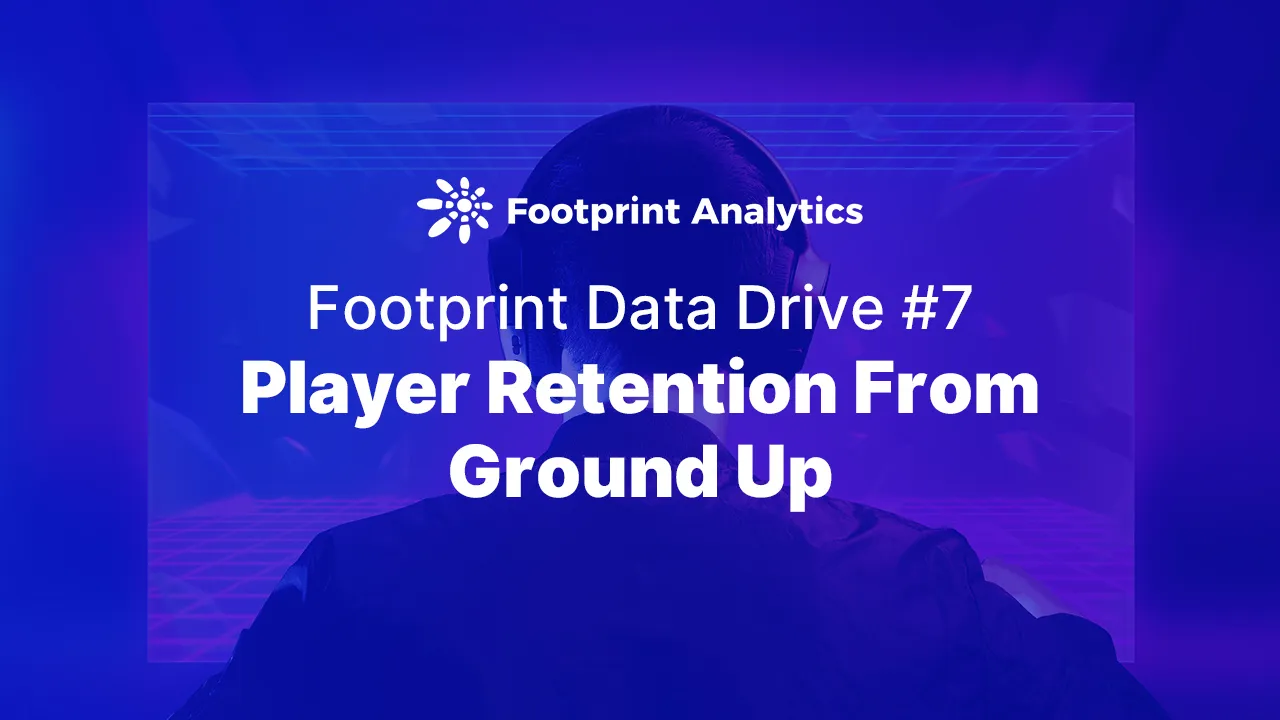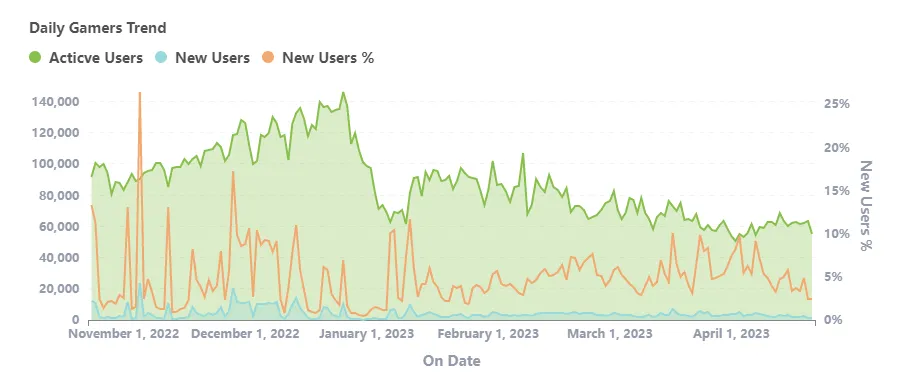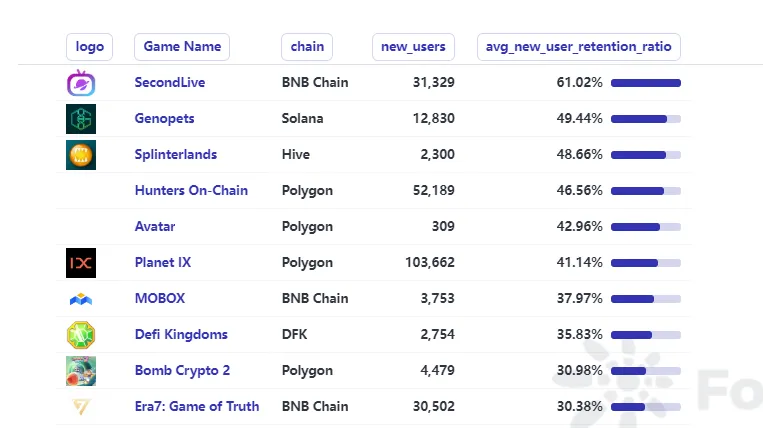

Author: lesley@footprint.network

The significance of acknowledging the hurdles and strategies involved in developing and managing web3 games cannot be overstated. Being able to effectively handle these challenges can play a crucial role in the overall success of a game. Thoroughly testing the game before launch and continually providing new gameplay and content after launch are just some of the strategies to ensure the stability of a game’s economic system.
This article also discussed some other interesting topics such as airdrops, bot issues, tokenomics design and game meta-design in Web3 games. It is super important to understanding player needs and creating a complete game ecosystem that balances benefits and attracts new players to support a thriving game community.
Prospects and Improvements in Monetary Economics for Web3 Games in 2023

The emerging field of web3 gaming offers a wealth of exciting opportunities for innovative game developers, as many projects are already demonstrating, such as Shrapnel, AXIE and Illuvium. However, game developers need to be aware of a number of key challenges to ensure the success of their projects in this rapidly evolving ecosystem.
A common trend in the market is the early release of tokens and NFTs, which many developers and gamers believe is essential to the success of a game. However, developers should be cautious about releasing too many tokens before the game has been thoroughly tested and is ready for launch. Instead, new gameplay and content should be made available to players after launch to keep them interested and to establish a stable economic system. Releasing too many tokens too early can create instability and undermine the long-term success of the game.
To avoid this, we should notice the principle “the toy on the shelf idea”. This concept suggests that, like the toys in a toy shop, pre-releases and NFTs can look attractive and attract interest and investment. However, once the game is officially released, these pre-releases become obsolete. To attract and retain players, developers need to offer new and exciting gameplay and content. This approach will create a loyal and engaged player base, helping to establish the game’s success in the Web3 gaming ecosystem.
Airdrops in web3 games can be a common way to retain players, but they have been seen as a toxic feature, with players participating solely to earn money without contributing to the game’s ecosystem. The use of bots to automatically participate in multiple airdrops for more rewards has also been an issue. These toxic features weaken the game’s ecosystem, causing the value of the game’s assets to become unstable and fall.
Actually, airdrops are not inherently bad, but their effectiveness depends on the right player base. In contrast, a game that prioritizes the creation of a stable in-game economy can have a more enduring appeal to players.
World of Warcraft, for example, has a system where players start with lower-level materials and gradually move up to more valuable materials, each of which has a different value and can be sold in-game for gold. This creates a niche market where new players have a demand for lower-level materials, while advanced players have a market to sell their unneeded materials. Developers who create games with a focus on gameplay and a robust economy are more likely to attract players who are interested in the design and mechanics of the game, rather than those who are solely motivated by the potential return on investment.
So while airdrops can still engage players, they should not be the primary method of player retention. Games should strive to create a virtuous cycle of gameplay and a robust in-game economy that players find engaging and worthwhile in its own right.
Keep Players by theDesign of Web3 Game and Their Ecosystem
On how to make airdrops and other game assets valuable, game developers should keep the original investor happy by introducing limited availability items or achievements that require manual input to maintain exclusivity. This helps to increase the value of the initial investment over time and keeps the game interesting while avoiding power creep. The conversation highlights the importance of creating a game with a solid economic system that encourages engaged and active players, not just those motivated by return on investment.
Exclusivity plays a crucial role in player retention, and game developers can use various mechanisms to build exclusivity into their games. CSGO’s Counter-Strike skins, for example, are highly exclusive items that can be sold for huge sums due to their limited availability. Similarly, MIR4 creates exclusivity through manual achievements that require player input, making them difficult to bot. These exclusivity factors help to increase engagement and maintain the value of in-game items, which in turn keeps players interested and engaged.

Also, maximizing player retention through effective tokenomics design in web3 games requires a focus on creating fun and immersive experiences for players. Asset values and real-world issues should take a back seat to create unique and engaging games that keep players invested for the long term.
An example of a game with an engaging design is Magic: The Gathering, which regularly releases new content and offers different gameplay formats to keep players interested.
Keep Players by the Design of NFT and Other Digital Assets
In the context of web3 games, NFTs should have some power, but maintaining a balance between players is crucial. Games such as Gala Games’ Town Star have shown that over-reliance on NFTs can give some players a significant advantage while making it almost impossible for others to win.
Balancing the power of NFTs requires careful consideration of a number of factors, including the motivations and needs of the players. In both PVP and PVE games, NFTs should have some power, but not so much that the game is dominated by pay-to-win players. Instead, a balance should be struck that encourages player engagement and socialization.
In order to keep players in web3 games, developers should create mechanisms that balance advantages for whales with opportunities for other players to catch up. This balance can be achieved by providing high quality content for whales, while rebalancing the rest of the player base over time. In addition, attracting new players to challenge whales is essential and requires significant investment in advertising.
Overall, effective tokenomics design in web3 games is about creating a complete game ecosystem that understands player needs, balances player advantages, and attracts new players to build a thriving community. Game developers should focus on designing mechanisms that encourage player engagement, including NFTs, and carefully consider interactions and relationships between players to promote a balanced, long-term game environment.
How to Avoid Bot Issues

Web3 games have a significant problem with bots, with some games seeing bot user numbers over four times the daily trading volume, which is suspicious. However, many games avoid removing bots because they can use bot numbers to claim they have more active users than they actually do.
Developers can do something about this to get a better game. If wallets could be associated with a single account, a network of associations could be built to identify bots. If the game has a trading economy, multiple accounts transferred to a single account could reveal direct associations that developers could mark as belonging to a single account, helping to identify the number of real players.
Games need to build an ideal player model, but bots can be mistaken for ideal players because they log in and complete tasks every day. Trading behavior can be used to differentiate between bots and real players, and this can help to create truly attractive activities for human ideal players rather than bots.
Change the Meta of a Web3 Game can also Keep Players
Changing the meta of a Web3 game has both advantages and disadvantages. On the one hand, it can attract different types of players and increase retention. On the other hand, if the changes are too frequent, it can drive away some players. Therefore, it is necessary to attract different players in the overall game design and to consider different needs when changing the meta.
Just like in Honor of Kings, different players prefer different play styles, such as using giant soldiers and span troops for a fierce attack, or using a large number of inexpensive troops for quick rotation, or using long-range attacks against opponents. If one style of play is too span, game designers can adjust the game mechanics and strengthen other styles of play. It’s also possible to experiment with ‘crazy’ gameplay in a given month to force players to try new ways of playing. However, it’s important to avoid being too forceful and driving players away.
In order to retain different players by changing the meta, it is important to understand players of different ages, professions, analytical abilities and leisure levels. Game developers must analyze what the game already offers and what needs to be added to optimize the experience for different players. Accessibility design, choice of colors, one-handed or two-handed play and other factors should also be considered. Game developers should strive to balance different needs when changing the meta, learning from successful case studies and experimenting with new gameplay, but avoid being too forceful.
Changing the game meta is one solution, but there are risks involved. On the one hand, game developers need to attract and retain different types of players in the overall game design. On the other hand, when changing the meta, different players need to be considered. In the game Clash Royale, developers use different cards and gameplay to attract different players. Some players like to deploy a lot of units in front of the giant, some like to rotate a lot of cheap units quickly, and some like to harass from a distance.
To keep different players engaged while changing the meta, there are several tips:
- Attract different players in the overall game design,
- Balancing different needs when changing the meta, avoiding one style of play being too span and optimizing for different styles of play,
- Encourage players to try new styles of play through daily challenges, etc. without putting too much pressure on them and driving them away,
- Carefully monitor feedback from different players and strike a balance between encouraging the exploration of new play styles and retaining existing players.
Riding the Waves of Web3: A Story of Power and Return to the Common People
Web3 is in its early stages, and its ecosystem was initially developed by the common people to protect their investments and profits. However, as web3 becomes more widespread, it falls into the hands of the wealthy class, who take control away from the common people. Eventually, as the rich and famous tire of the technology, it will begin to return to the common people.
At this stage, it is important to develop projects that create value for the common people so that web3 games can mature and benefit more people. Common developers must constantly experiment, learn and improve their operational and development skills to truly understand users and create value. Failure may be inevitable, but perseverance and continuous efforts to create value for the common people will eventually yield unexpected results.
It is important to monitor whether the asset class begins to enter the market and make a profit, as this could lead to the common people losing control. Developing projects that represent the interests of the community is essential to guard against this risk. In order to avoid losing control, common developers must have the foresight and resilience to contribute to the healthy development of web3 games at this critical stage. By paying attention to the development of the industry, understanding the motives and behavior of various participants, and planning for the next stage of development and operation, Web3 games can develop stably and eventually return to the common people.
Overall, the future of web3 games depends on the dedication and innovation of common people developers who are committed to creating value for the common people. Continuous experimentation and development will bring unexpected results, and through joint efforts, we can create a more equitable, transparent and accessible gaming ecosystem that benefits everyone.
This piece is contributed by the Footprint Analytics community.
The Footprint Community is a place where data and crypto enthusiasts worldwide help each other understand and gain insights about Web3, the metaverse, DeFi, GameFi, or any other area of the fledgling world of blockchain. Here you’ll find active, diverse voices supporting each other and driving the community forward.
Footprint Website: https://www.footprint.network
Discord: https://discord.gg/3HYaR6USM7
Twitter: https://twitter.com/Footprint_Data
This is a podcast from Footprint Analytics about the challenges and effective tokenomics design for player retention in web3 games. Our guest, Daniel, is a web3 gaming data analyst with several years of experience in the industry.
